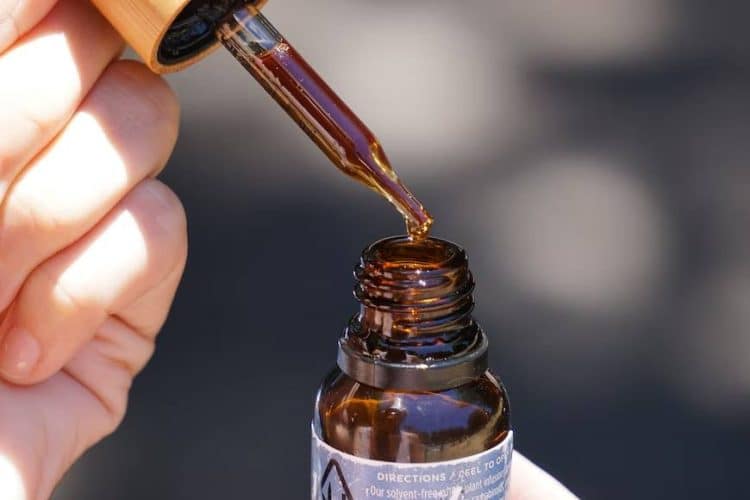Interest in all types of cannabidiol (CBD) products has skyrocketed in recent years, with millions of people willing to try CBD products. According to 2022 statistics, it’s believed that although 22% of people say they don’t trust CBD, 68% have said that they use it and find it effective for their needs. [1]
Almost everywhere you go, you will likely come across a CBD product, whether it be an oil, a balm, a tincture, a drink, or a packet of gummies. Yet, even though CBD is becoming easily recognizable for the most part, many people still don’t quite know what the difference is between a tincture and a distillate.
Many know that CBD and tetrahydrocannabinol (THC) have to be extracted and distilled from cannabis. [2] The extraction process is complex, but once the extraction has occurred, a tincture is produced, and through a distillation refinement is possible to create a distillate. Surprisingly, despite appearing to be similar, a tincture and distillate are two wholly different.
What Is A CBD Tincture
According to some researchers, CBD tinctures have existed in human society since the 1800s. [3] A tincture is made when cannabis-derived plant material is mixed with ethanol.
Unlike other forms of CBD consumption, tinctures have rapid effects and will start working shortly after they are taken through a sublingual spray or under the tongue. The effects of most tinctures can be felt within 15 to 20 minutes because they are absorbed directly into the bloodstream. However, some prefer to take a CBD tincture by mixing a few drops of it into a drink or food.
Additionally, tinctures are preferred by those who want to take their medicine privately or those who prefer taking microdoses.
What Is A CBD Distillate
Unlike a cannabis tincture, a CBD distillate is a highly concentrated substance that usually contains between 70 to 75% CBD in addition to various cannabinoids and terpenes. [4]
CBD distillate is a golden viscous liquid and is the result of an extract refinement process known as
short path or fractional distillation. Although 70 to 75% is the typical range of CBD percentage contained in such refinement product, some can be made into 99% pure batches. Terpenes can be collected in separate containers during the distillation process and can be added to the pure CBD extract in order to enhance the therapeutic effects.
Cannabis distillates are often used in topical creams, vape cartridges, candies, and edibles. CBD distillates are also found in cosmetic and pharmaceutical products to treat various illnesses and health problems. Moreover, CBD distillates have also proven to be effective at treating depression, pain, stress, and symptoms associated with cancer.
What Is The Difference between Tincture And Distillate?
Ultimately, the main difference between a CBD tincture and a distillate is that distillates are far more potent than tinctures and have more use cases. Distillates are purer and more concentrated, whereas tinctures taste better (they retain their strain flavors), are solvent-based infusions, and are most often used for small dosages and in edibles.
References:
[1]Team SC, Team SC. How popular is CBD? The Checkup. https://www.singlecare.com/blog/news/cbd-statistics/
[2]Lazarjani MP, Young O, Kebede L, Seyfoddin A. Processing and extraction methods of medicinal cannabis: A narrative review. Journal of cannabis research. https://www.ncbi.nlm.nih.gov/pmc/articles/PMC8290527/ [Journal Impact Factor = 4.786], [Times Cited = 14]
[3]Bridgeman MB, Abazia DT. Medicinal cannabis: History, pharmacology, and implications for the Acute Care Setting. P & T: a peer-reviewed journal for formulary management. https://www.ncbi.nlm.nih.gov/pmc/articles/PMC5312634/ [Journal Impact Factor = ], [Times Cited = 400]
[4] Zheljazkov VD, Maggi F. Valorization of CBD-hemp through distillation to provide essential oil and improved cannabinoids profile. Nature News. https://www.nature.com/articles/s41598-021-99335-4 [Journal Impact Factor = 69.5], [Times Cited = 3]
Image: Unsplash/ Elsa Olofsson











